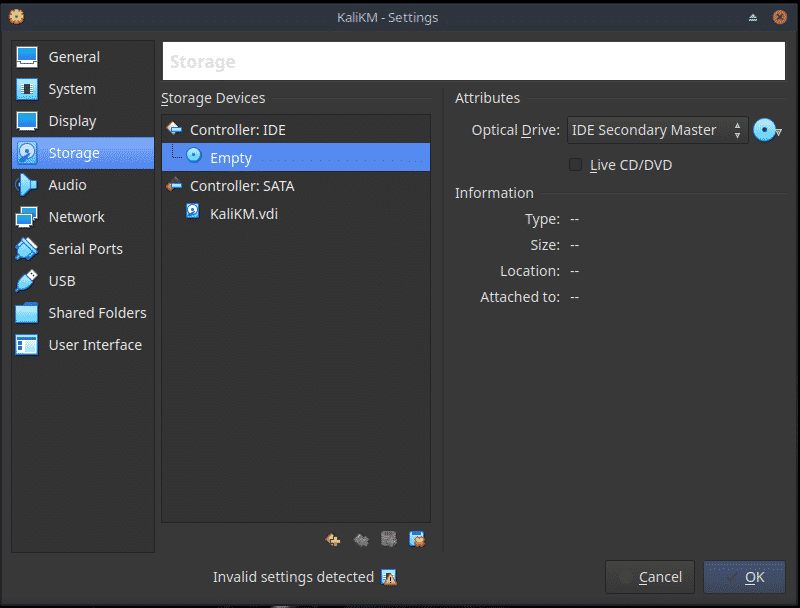
rvice - Service for virtual machines hosted on VMware.We can confirm VMware Tools is running correctly on Kali by opening a terminal window and checking the service using systemctl: $ systemctl status open-vm-tools
#KALI LINUX VM INSTALL#
As it happens, we don’t have to do anything with our Kali Linux VMware Install because the Kali VM already comes with Open VMtools installed. Typically when you create a VMware virtual machine you will want to ensure the VMtools package is installed and working correctly.
#KALI LINUX VM ARCHIVE#
The contents of the archive I downloaded looks like this:Īnd that’s it! We now have a working Kali VMware virtual machine using VMware Workstation. Interestingly, the contents of the download is a set of virtual machine files, rather than the a OVA or OVF file.

7z file (for which you may need 7-zip to extract the contents). The current version which I am using for this tutorial is Kali 2020.4, which is a 2.4 GB download in the form of a. Installing Kali on VMware is made easy, due to there being an official Kali VMware machine available for download.
#KALI LINUX VM HOW TO#
Here we will be covering how to install Kali Linux on VMware Workstation, but many of the steps will be valid for VMware Player and for VMware Fusion which are VMware’s other desktop hypervisors. Usnig the virtual image is a good alternative to using a live CD. Running Kali as a VMware virtual machine means you don’t have to do a bare-metal install, and get the advantages that running as a VM offers. Kali comes bundled with over 600 tools used for penetration testing. It is maintained and funded by Offensive Security. Kali Linux is a Debian-derived Linux distribution designed for digital forensics and penetration testing.

I wanted to test some changes I’d made, as well as some of my firewall rules so it was simple to kick some tests off on my Kali VM at work as I knew what the source IP would be so filtering my firewall logs to check would be easy.This article goes through how to install Kali Linux on VMware Workstation. The main reason is rather trivial and selfish – I have a static IP address at home for my VPN as it just makes my life easier. It’s rare that I use Kali as a VM on ESXi – on Workstation, yes all the time but rarely do I leave a copy running on one of my clusters. OK now that we’ve sorted the settings let’s power on the virtual machine and see whether the ‘fit guest’ option is available to us.

Let’s enable this option and then try our console resizing again. It is disabled and this is what we need to amend. I’ve highlighted the option we are interested in – ‘Enable 3D support’. OK not a problem let’s edit the virtual machine settings, specifically the virtual video card hardware settings.

Hmm when I go to the ‘View’ menu option I am not given the choice, it’s greyed out. Here we have the standard VMware VM console – it’s not that big a screen to work with when you need to use it so it’s handy to be able to stretch it out and then tell the VM to fill the window. Before anyone says it, the guest tools were already installed and running as expected.Īfter a moment I remembered to check the virtual machine graphics options and that was when I found the culprit. Unfortunately it didn’t work and for a moment I was scratching my head. Once the install was complete I opened the virtual machine console and dragged it out to be larger then told the console to scale the Kali instance to fill it. I recently had a need to deploy a virtual machine (VM) instance of Kali Linux on VMware ESXi.


 0 kommentar(er)
0 kommentar(er)
